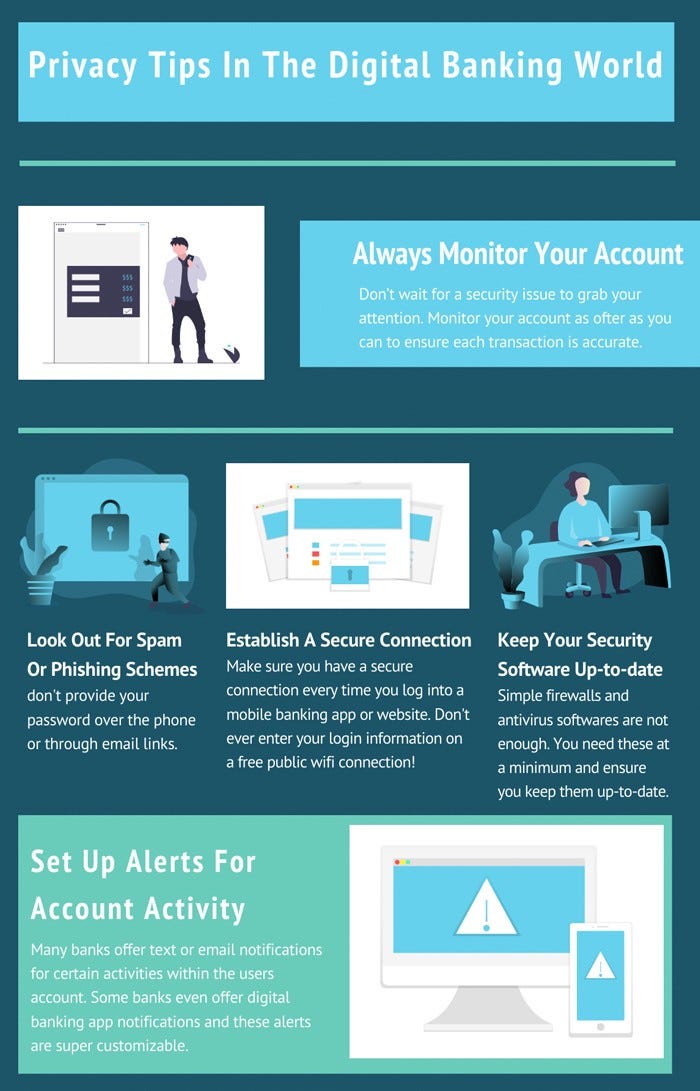App Annie’s 2019 State of the Mobile Report found that users in the United Kingdom checked their banking apps more than 7 times per week.
Consumer usage of digital banking technologies has been increasing year over year but The Financial Brand is reporting 34% of fin tech app users are still extremely concerned with data privacy. This could be an area of opportunity for traditional banks if they are willing to take the time to educate their customers on personal data security. Read through our tips and learn how to apply them at the 2nd World Digital Banking Summit.
No doubt, data privacy is a big concern in 2019 but we’ve compiled 7 tips (besides creating a strong password) that could make it easier to stay in control of your personal information:

1: Choose a bank that offers two-step verification
These days most banks offer at least one form of two-step verification with a unique pin that will be sent to your mobile device. This pin is only available temporarily and has to be entered in addition to your normal login credentials. Some banks allow even further two-step verification like facial recognition or fingerprint scanning.
Talk to your bank or look in your mobile banking app settings to see what security features are offered to you.
2: Keep Your Security Software Up-to-date
Since the beginning stages of digital technology use, security has always been a concern. That is still the case now more than ever. Simple firewalls and antivirus software are not enough. You need these at a minimum and ensure you keep them up-to-date.
3: Establish A Secure Connection
Make sure you have a secure connection every time you log into a mobile banking app or website. Do not ever enter your banking login information on a free public WiFi connection!
Always use a device and network that you trust. If you must connect to your bank through an unknown device or network, you may want to create an encrypted connection using a VPN.
Once you are on your banking website, look for two things to confirm you have a secure connection. One will be https in front of your URL and the other will be a small lock icon, usually in front of your URL as well. If you see both of these things, that is a good sign you’ve established a secure connection.
4: Look Out For Spam Or Phishing Schemes
Banks know privacy is a huge concern for customers so most likely they will never ask you for login information over email. Also, beware of emails containing links that lead you to other sites. These sites can be made to look like your bank login screen but are ultimately set up to steal your credentials and your money if given the opportunity.
Phone scams are another way bad guys attempt to steal confidential information. You should never have to provide your full password or pin to your bank over the phone, although they may ask for part of it. If you are unsure, don’t be afraid to hang up and call your bank back from a secure number you are familiar with.
To read about the other 3 privacy tips and to learn more our 2nd World Digital Banking summit, click here.
The 2nd World Digital Banking Summit will provide an ideal platform for banking, financial services, and Fin Tech professionals to discuss new advances in processes and technology that will improve the overall banking experience and allow customers to be more in control of their personal information.

No comments:
Post a Comment